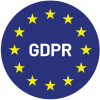Massive markets of thousands of potential and confirmed customers, demographically identified with similar characteristics and geographically spread over cities and neighborhoods, are likely to think and feel similarly when face to face with specific needs. So, it’s an attractive proposition for marketers to extract feedback with insights into brand differentiators based on potential customers’ likes, dislikes, feelings, and thoughts.
Ideally, we would like to survey every member of a targeted population for insightful feedback to impact our branding, messaging, and promotions. Unfortunately, an exercise of that scale is not feasible. Why? It would be an uneconomic, vastly expensive, and almost impossible logistic challenge. That’s where cluster sampling bridges the gap between wild guesswork and making calculated, statistically accurate predictions.
What is cluster sampling?
It begins with a vision of the perfect sample.
The idea of cluster sampling is to survey a fraction of the overall market on the theory that it’s a “mini-me” of the big picture. If the sample selection goes to plan, the researchers can confidently extrapolate the feedback, applying it to everyone in the targeted population. The primary obstacle to achieving such a magnification from a much smaller group is that while demographics create similarity, exact sameness isn’t realistic. Why?
- Each person in the population still has individual perspectives that may disagree with the majority.
- Therefore, logic dictates that deriving consensus (i.e., relevant motivational similarity) depends on surveying enough people representing the same weighted population characteristics without covering every one of its members.
Professional researchers’ strategy in pursuit of the “perfect cluster sample”
Step One
Define the market you’re aiming at, a strategy known as market segmentation. Marketers initially approach this by describing the market demographically.
For example: A top-brand cosmetics company (let’s call it Company X) is interested in gaining traction with college-educated female executives of all races earning over $150,000 annually living in four South Florida cities (Miami, Fort Lauderdale, Boca Raton, and West Palm Beach), unmarried, between the ages of twenty-five and forty. The demographic data outlines these respondents’ workplaces with addresses, names, designations, and contact details.
Step Two
Begin the cluster sampling process to create the insights you need.
Continuing with our example, Company X maps targeted respondents’ work locations – in many instances pinpointing more than one respondent at the same address – as a cluster or representative sample precisely matching the demographic description. As a result, over the four cities, the stakeholders defined a targeted research landscape containing thousands of clusters (i.e., office addresses) – 2,500 connected to 11,500 potential respondents (many of them business owners, lawyers, dentists, and physicians).
Step Three
Get into the mechanics of one-stage cluster sampling.
Ideally, one would like to go cluster by cluster, interviewing every respondent working at the identified addresses, exposing them to the same survey to derive feedback. However, given their time and budgetary constraints, this made no sense to the Company X strategists. They considered a one-stage cluster sampling method that revolved around randomly selecting clusters from the 2,500 locations – “Random Selection 1” or “RS1” – comprising 400 office addresses (100 in each city).
For this cluster sampling method to work, the following parameters are crucial:
- Each cluster in the sample must represent the same respondent demographic profiles (i.e., unmarried female executives as described above). Beyond this, diversity (heterogeneity) within those profiles is acceptable, for example:
- White, black, and Hispanic females may all be in the mix.
- The same goes for different ages within the range.
- College education can range from undergraduate to doctorate.
- Salaries start at $150,000 but can go much higher.
- Designation or occupation can be anything.
- Behavioral characteristics such as anxieties, influencers, ambitions, and aspirations are not in the cluster definition.
- There must be no overlap between the clusters. How is this possible? For example, physician, dentist, or psychiatrist respondents may work in different offices on different days, thus skewing the base if interviewers fail to address the overlap
- When looking at the total number of respondents in all the clusters, you must be satisfied that they represent a fair cross-section of the entire market
Step Four
Explore second stage or multi-stage cluster sampling.
The one-stage cluster sampling method may still be outside Company X’s budget, overwhelming the economics surrounding the project, even with less than the total number of clusters in the random selection (i.e., RS1). So, researchers reviewed the 400 clusters, randomly selecting respondents from them (i.e., not all the respondents in each location). This falls under second-stage sampling, or if one whittles it down further, multistage sampling. An example of the latter is randomly selecting fifty percent of RS1’s 400 office addresses (50 per city) – let’s call this RSA2 – and then randomly sampling respondents extracted from RSA2
The takeaway is this:
- No matter how far the dilution goes, it doesn’t disturb the original demographic DNA in the cluster universe or the non-overlapping requirement.
- However, individualism may distort demographic sameness if it tapers down to a statistically insignificant number of respondents versus the population size. As a result, the feedback will reflect unrepresentative biases
- Thus, the researchers must balance running a statistically acceptable survey while not letting the costs overwhelm the benefits.
In summary, Company X (in our example) must decide on a sample size that closely aligns with reliable feedback, highlighting the population market behavior. The process of cluster sampling from one- to second- or multiple-stage ensures you reach the targeted number of respondents cost- and time-effectively. The fact you’re traversing the targeted clusters holds the audience profile together.
The advantages of this approach are that the process is:
- Relatively easy to execute.
- Significantly less expensive than other strategies where one has to apply complex probability calculations, stratify samples on much stricter parameters, and spend time finding suitable respondents (such as simple random sampling).
- Accurate for the reasons provided above.
The pitfalls are as follows:
- Faulty demographic information in step one above will likewise reflect in your clusters.
- Locations are a crucial aspect. So, defining and ensuring you can access them within budget is frequently a challenge.
- When one gets into multistage sampling, it’s easy to forget the base number of respondents one needs for feedback accuracy.
A marketplace cluster sampling example
An environmental study group focusing on water quality in the Los Angeles metro region began by accumulating relevant information from municipalities and regulation authorities in California. They used it to divide neighborhoods (clusters) by residential, industrial, or agricultural zoning. The residents of the three cluster categories are, of course, significantly different from one another, so the cluster sampling strategy became a three-part exercise.
- The only limitation was to interface with the heads of family (in residences) and designated managers or owners of commercial ventures in the other two land categories.
- Once structured, the researchers immediately drilled down to secondary cluster sampling in all three areas, followed by multi-cluster sampling in the residential segment, where the volume of clusters was overwhelmingly large.
When is it best to use a cluster sampling method?
Everything depends on defining your population. Segmentation is a complex subject that frequently goes beyond demographics. To demonstrate this, assume the cosmetics firm in our original example wanted to segment the $150,000 (plus) high-earning, unmarried female respondents behaviorally and psychographically before surveying. It may go as far as dividing the population by those who:
- Follow influencers (e.g., Oprah, Taylor Swift, etc.)
- Actively pursue marriage partners on dating sites
- Display career stability anxiety
- Prioritize peer recognition
The constructs in (1) to (4) above are at the core of emotional and cognitive market behavior. Note the following regarding this level of insight:
- In most cases, it’s information you want to derive from the surveys after sampling that is unavailable going into the project.
- Assuming such data is available, it’s more suitable for stratified sampling (another discussion).
- Their inclusion in a cluster model (as described) is practically impossible. Why? The latter works well for straightforward demographic population identification but derails quickly when you want to insert deeper, more complex differences into the equation.
Cluster sampling with professionals in your corner
Various companies and online consultants involved in employee and customer experience understand cluster sampling techniques and strategies like the backs of their hands. The leaders are Sogolytics, SurveyMonkey, Typeform, and Google Forms; they will get you off on the right foot by determining if cluster sampling will create the insights you’re looking for. Sogolytics, in particular, has a second-to-none research team on tap with an extensive resource pool of survey methodologies aligned with the sampling option you select.
With AI-enhanced technologies at our fingertips, automated testing is affordable, and the data analytics behind cluster sample feedback tells you quickly if the data is usable. Contact us today for more information and direct discussion about your project.
FAQs
Q1: What is cluster sampling?
A: A methodology for profiling a large marketplace (or population) by surveying a fraction of its participants without biases that distort the accuracy of the emerging insights.
Q2: What are the different types of cluster sampling?
A: First-, second-, and multi-stage cluster sampling in a progressive process depending on the population size, budget, and clusters involved in the project.
Q:3 When should I use cluster sampling?
A: When your market definition allows it, generally with large cluster sampling example situations.
Q4: What are the advantages and disadvantages of cluster sampling?
A: The advantages of this approach are that the process is:
- Easy to execute.
- Significantly less expensive than other strategies where one has to apply complex probability calculations and spend time finding suitable respondents (such as simple random sampling).
- One you can rely on for accuracy for the reasons provided above.
The pitfalls are as follows:
- Faulty demographic information in step one above will likewise reflect in your clusters.
- Locations are a crucial aspect. So, defining and ensuring you can access them within budget is frequently a challenge.
- When one gets into multistage sampling, it’s easy to forget the base number of respondents one needs for feedback accuracy. Keep sight of the latter.
Q5: What are the differences between cluster and stratified sampling?
A: The primary difference rests in the creation of one’s samples. Cluster Sampling groups, while sharing fundamental characteristics, may vary significantly in other traits, whereas Stratified Sampling requires much narrower, more exact definitions.
Q6: How do I determine the appropriate cluster size for my research?
A: This is where the input from professionals plays a crucial role in calculating the sample size that will yield accurate results for your surveys. Connect with your partner providers to dive deep into how and when to implement these strategies.














